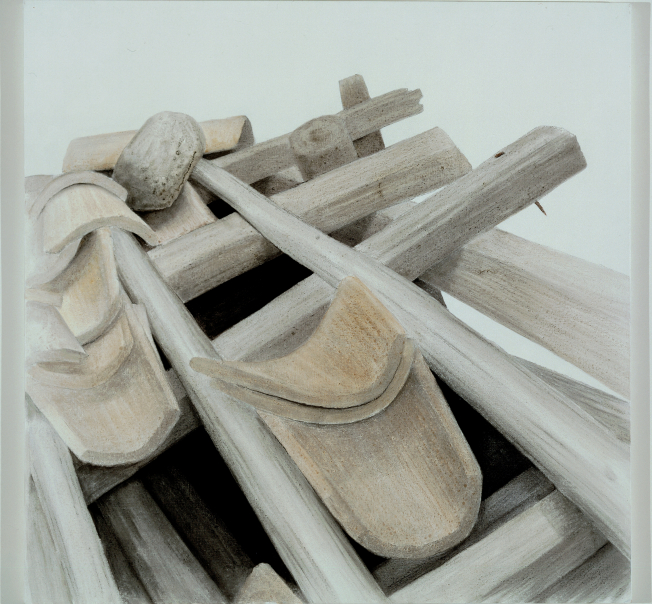Old roof, 1986

Sotiris Sorongas was a pupil of Yannis Moralis at the School of Fine Arts (1957 - 1961) and then held a Ford Foundation scholarship for the study of contemporary art in New York and Chicago, as well as in Paris and London. He was one of those artists who in the 1960s, in parallel with the trend of the new abstraction and of giving precedence to the gesture over the object, raised afresh the problem of representation, but in new critical and cultural terms. A linear, precise design with a tonal outline, a substantive role for light, which from one side floods the space, giving rise to dream situations, and from the other lends volume to the objects, minimal, but for that reason emphatic, use of colour with a metaphorical function, repeated motifs - these features render the artist's painting an important vehicle for critical thought and questioning.
In his painting, piles of stones, pieces of wood, mouths of wells, half-demolished roofs, ruins hover in the blinding light of the canvas, themselves light, stressed with only as much colour - usually grey - as is needed for their mass to be suggested. Among these, at the beginning - later in the centre - is the black hole of chaos, which is sometimes torn by a bright red, a source of hope and life. The absolute sense of the void, of silence, of desolation is suggested by the exceptionally sparing use of the means of expression. With the sole predominance of white and grey, stressed with some deep earthy shade, whose use has expanded in recent years, and with the total absence of the human figure, this feeling is suggested even more. The objects which define the space, arranged in a dense composition full of tension, which unites and absorbs, are at the same time a womb which gives birth, chaos which is reconstituted by a constant flow of decay and re-creation.

In Old Roof, what is shown is a world plundered by decay and neglect. Half-broken tiles, crumbling beams and stones, with the marks of time apparent upon them, stand out in a dense composition in the blinding light of an all-white canvas. With the spareness of sketching in the depiction of the various features of the picture and the sui generis, virtually monochrome rendering of the surfaces, intensity is given to the sense of absence and silence which leads beyond the world of reality to somewhere metaphysical, which is none other than the poetic challenge of objectivity.



